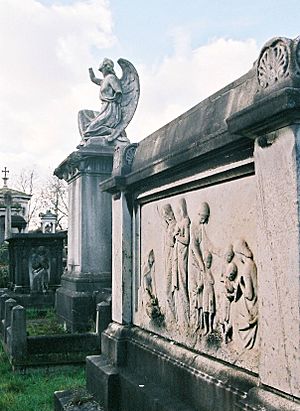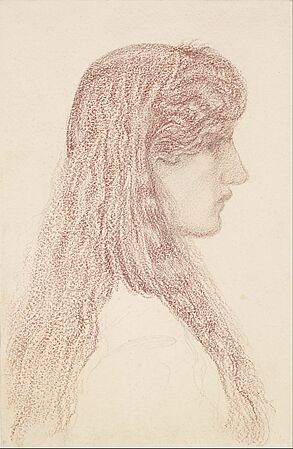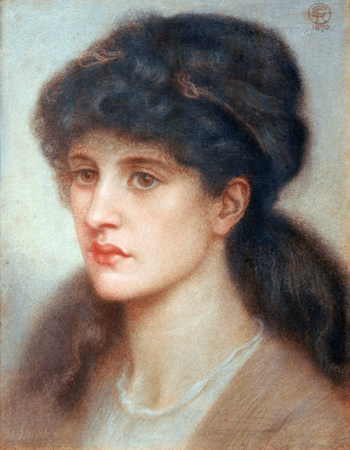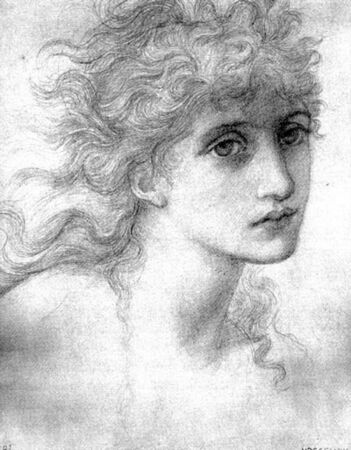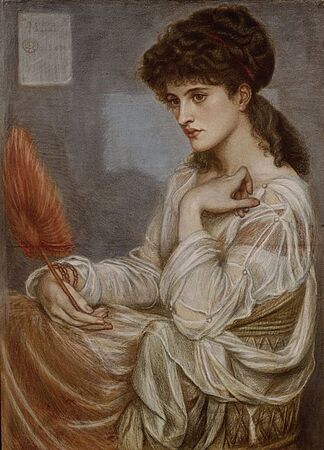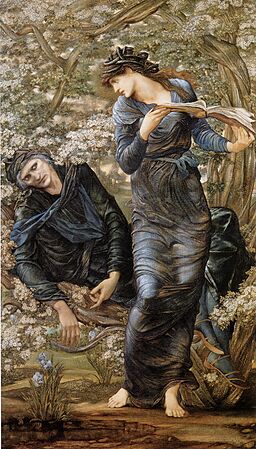Maria Zambaco facts for kids
Quick facts for kids
Maria Cassavetti Zambaco
|
|
|---|---|
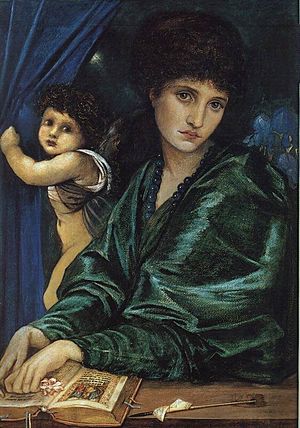
Maria Zambaco, née Cassavetti, in Cupid and Psyche by Edward Burne-Jones, 1870
|
|
| Born |
Marie Terpsithea Cassavetti
29 April 1843 London, England
|
| Died | 14 July 1914 (aged 71) Paris, France
|
| Nationality | British and Greek |
| Education | Slade School |
| Movement | Pre-Raphaelite Brotherhood, Aesthetic Movement, Arts and Crafts Movement |
Maria Zambaco (born Marie Terpsithea Cassavetti) was a talented artist and model. She was born in London on April 29, 1843, and passed away in Paris on July 14, 1914. Maria was of Greek heritage and became a popular model for artists known as the Pre-Raphaelites. She was also a skilled sculptor.
Contents
Maria Zambaco's Early Life
Maria was the daughter of Demetrios Cassavetti, a wealthy merchant, and his wife Euphrosyne. Her family was of Greek origin living in the United Kingdom. Her uncle, Alexander Constantine Ionides, was the Greek Consul and a well-known supporter of the arts.
Maria and her cousins, Marie Spartali Stillman and Aglaia Coronio, were very close. Their friends called them "the Three Graces." This name came from the Charites in ancient Greek mythology, who were goddesses of charm and beauty.
In 1858, Maria inherited money from her father. This allowed her to live a more independent life. She was known for going out without a chaperone, which was unusual for unmarried women at that time.
Maria Zambaco's Artistic Journey
Maria was very dedicated to art. She studied at the Slade School in London under Alphonse Legros. Later, she continued her studies in Paris with the famous sculptor Auguste Rodin.
In the 1880s, Maria worked as a sculptor. She shared a studio space in Chelsea, London with another artist named Louise Jopling. The British Museum in London has four medals that Maria created. These medals show the faces of young girls.
Maria also showed her artwork in public exhibitions. She exhibited at the Royal Academy in 1887. She also displayed her work at the Arts and Crafts Exhibition Society in London in 1889. Her art was also shown at the prestigious Paris Salon in France.
Maria was well-known among the Pre-Raphaelite artists. She had dark red hair and pale skin, which they admired. She was a favorite model for the artist Edward Burne-Jones. She also posed for other famous painters like James McNeill Whistler and Dante Gabriel Rossetti.
Maria Zambaco's Personal Life
In 1860, Maria met George du Maurier, who admired her. However, she was described as "rude and unapproachable" by him. Instead, she married Dr. Zambaco in 1860. They lived together in France for a time.
Maria had a son and a daughter with Dr. Zambaco. However, their marriage was not successful. In 1866, she moved back to London to live with her mother.
Maria continued to appear in Burne-Jones's paintings even after their close friendship changed. She was sometimes shown as a mysterious or powerful woman. Examples include The Beguiling of Merlin (1872–1877) and Phyllis and Demophoön (1870). The painting Phyllis and Demophoön was even removed from display at the Royal Watercolour Society because it caused some discussion.
Later Years and Passing
Maria Zambaco passed away in Paris in 1914. Her body was brought back to London. She was buried in her family's tomb at the Greek Orthodox section of the South Metropolitan Cemetery. This cemetery is located in Norwood. Her maiden name, Cassavetti, is recorded there.
Gallery
-
Portrait by Dante Gabriel Rossetti, c. 1870


